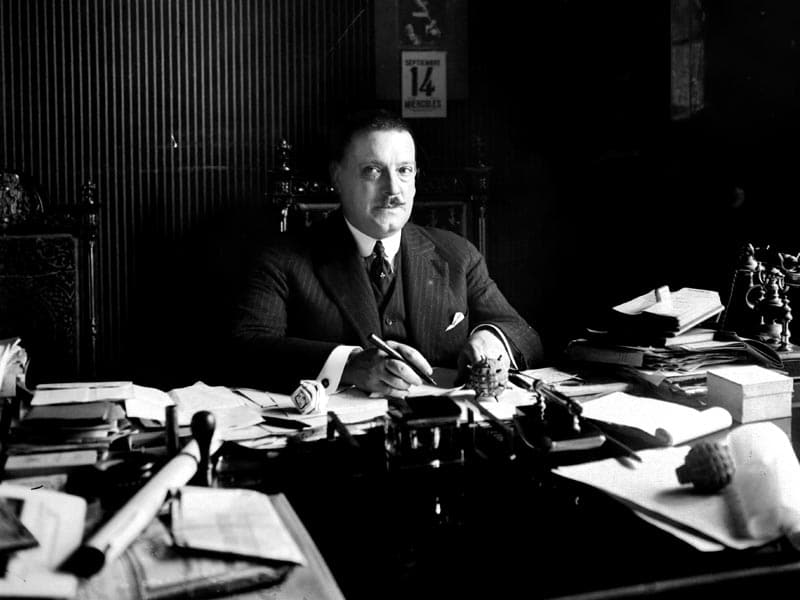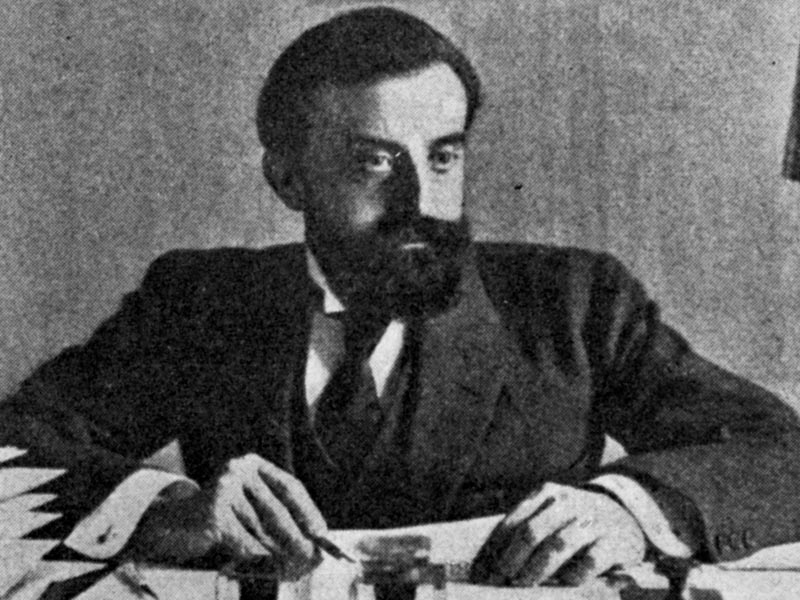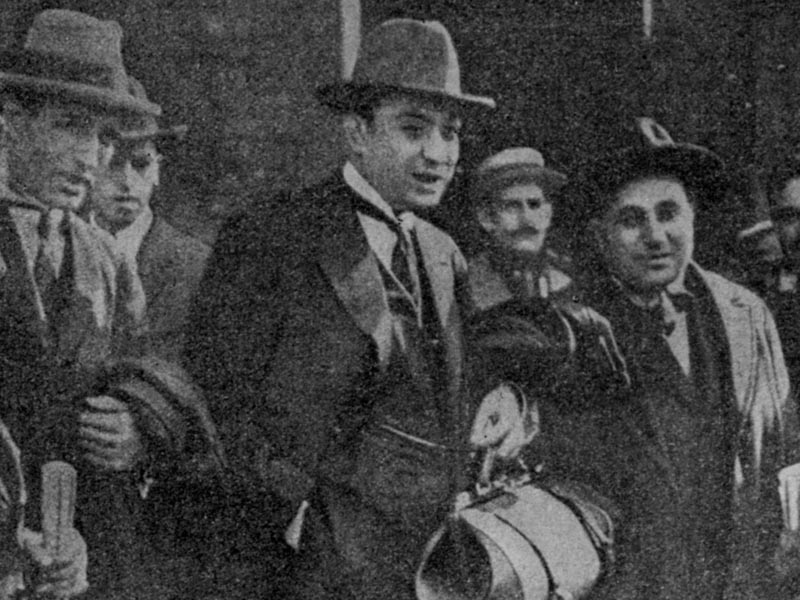Pistolerisme
Manel Aisa discusses the period of murder and reprisal in the 1920s known as Pistolerisme.
Pistolerisme took place in the ’20s. It occurred as people built the parallel society we discussed earlier. They’re met with a ton of repression at the hands of the bourgeoisie, the Catalan Employers Union. The Catalan Employers Union, principally in the construction sector, after the Canadenca strike in 1919, decides to create the Spanish Employers Union. Their single goal is to put an end to the CNT. That’s the Spanish Employer’s Union only purpose. Put an end to the CNT. One of the first things they set up, on Christmas 1919, and Epiphany 1920, is the “Lock Out.” During that time, in December and January, they implement a “Lock Out” in Barcelona, The factories grind to a halt so the workers can’t eat during Christmas. That’s the Catalan bourgeoisie’s greatest weapon. The idea is that they can return to work in mid-January 1920, under the condition that, in front of management, they tear up their CNT membership card. That isn’t 100% effective. Some still want to resist. And the people from the CNT resist, thanks, so to speak, to “Poor Defense.” Because they have company stores and cooperatives in place already, which helps them not so much resist, but survive. They’re generating no earnings whatsoever. It’s people who are quite poor getting even poorer. So their soup stock is made by adding shoes to bowling water for broth. They didn’t have much else. And it’s at the very moment that Pistolerisme began. Right then, on Barcelona’s Carrer de Tapineria, the Free Syndicate is formed. The Sindicat Lliure are gunman employed by the Employer’s Union. And there were bands, too. The first was the Baron of König’s. There was also a police officer, Bravo Portillo, who was ultimately executed by the workers themselves. In Barcelona and throughout Catalunya there are confrontations. Every day, a handful of dead. From 1920 to 1923, there’s fighting, every day, in Barcelona. People are dying in the street, because neither side will back down. This goes on until 1923, until the arrival of the new generation, of García Oliver, who we’ve talked about before. He recognizes that the Employers Union’s gunmen were recruited through blackmail. Meaning, “If you don’t help us, we’ll kill your daughter. We’ll kill your mother, your wife, whoever.” That’s how they recruited. So a worker who might have been the president of a trade union ends up working for the White Syndicate. Those things happened back then. Those things happened. Then García Oliver shows up, and suggests a change in strategy. “Why should we fight amongst ourselves at small Barcelona squares?” They decided to carry out what they called Revolutionary Gymnastics. Revolutionary Gymnastics meant to carry out economic strikes. That’s why they hold up the Bank of Spain in Gijon. They stage a robbery on Carrer de Avignon, where Barcelona’s City Hall treasury was located. They carry out several acts like that. By robbing banks they’re raising money to buy weapons in preparation for the revolution. They’re buying weapons that will later be put to use in 1936. That’s basically how it goes. And there was more to Pistolerisme than that. There was the Law of Fugitives. I don’t know if that was one of your questions. That was happening at the same time. There were two features to the Law of Fugitives. Martinez Anido, who was the Civil Governor of Barcelona in 1920 and 1921, when, for one, Salvador Seguí was killed. That’s Martinzez Anido and Miguel Arlegui, the head of repression in Barcelona. It’s these two who come up with the Law of Fugitives. The Law of Fugitives is nothing more than arresting someone, then, while bringing him from the station on Vía Laietana– though it wasn’t yet Vía Laietana– to lockup at Model Prison, the officers would take two steps back, and shoot him twice in the back, claiming he was trying to escape. That was the Law of Fugitives, a common practice in Barcelona. That, eventually, s denounced, and so, instead, what they do is, on Plaça Palau, where the main police station was located, at night, they’d set prisons free, but let the management gunmen know in advance. They’d be nearby waiting on a dark street like La Riera, in the old part of Barcelona, and shoot them from.
Ramon Alberch discusses the Law of Fugitives that was enacted during Barcelona’s epoch of Pistolerisme.At this point, the famous law of Fugitives appears. It simply legalizes the murder of union leaders. Between 1916 and 1920 over 400 people are killed and the methods are formulaic. Detain a labor unionist or worker. Give him a chance to escape, and then shoot him when tries to run. This practice is well documented. Primo de Rivera, in a transcript, explains it. “What we must do is arrest them, give them a chance to flee, and when they do, shoot them.” “It’s the only way,” he says, “to eradicate this scourge, this cancer that is anarchism.” So the law of fugitives is another tool that the state uses to put out a fire with gasoline. That is, now getting into the business of selective murder, too. The state donned the role of vigilante, going beyond the law itself. That’s the great issue of this period. The state should keep up the appearance of the rightful rule of law. It’s a state that thinks it’s acceptable to play the same game they do. So it leverages the underworld, the world of gunslingers and spies, to shut down this movement. They believe their cause is legitimate, and that they have the right to take any action to remedy the situation.
Ramon Alberch discusses an infamous character from the Pistolerisme era, The Baron of König.The Baron König holds a place in history, of German origins, I think, though others say Austrian, but it doesn’t matter. He appears in San Sebastián in the 1920s, a man with a background in casinos, arriving in Catalunya as a double agent. Back then, there was an organization of gunmen hired by the Employers Union to fight with the emerging labor union, the CNT, basically. And what this man does is play both sides for economic gain. He becomes a good friend of Bravo Portillo’s, who was the leader of the Black Band, which was the main group dedicated to organized violence. When Bravo Portillo dies, the Baron of König takes over as the group leader. He reaps, for a long time, huge financial rewards, an enormous level of income, and exerts great influence. All through this shrewdness, intelligence, operating like a spy who, on one hand infiltrates the working-class, but also, when needed, instigates an attack on an employer for the purpose of inciting revenge. Because of his great influence, he’s feared, especially during the ’20s, when he exerted great influence in Catalunya. He went into self-imposed exile in Paris, if I remember correctly, and died in 1945. But shortly before that, he was smuggling Nazis out of Germany as the war was coming to an end. So, clearly, a magnificent book could be written about this man.

1920 – Severiano Martínez Anido, Civil Governor of Barcelona.

1920 – Francesc Layret, a victim of Pistolerisme, seated at his desk in Barcelona
